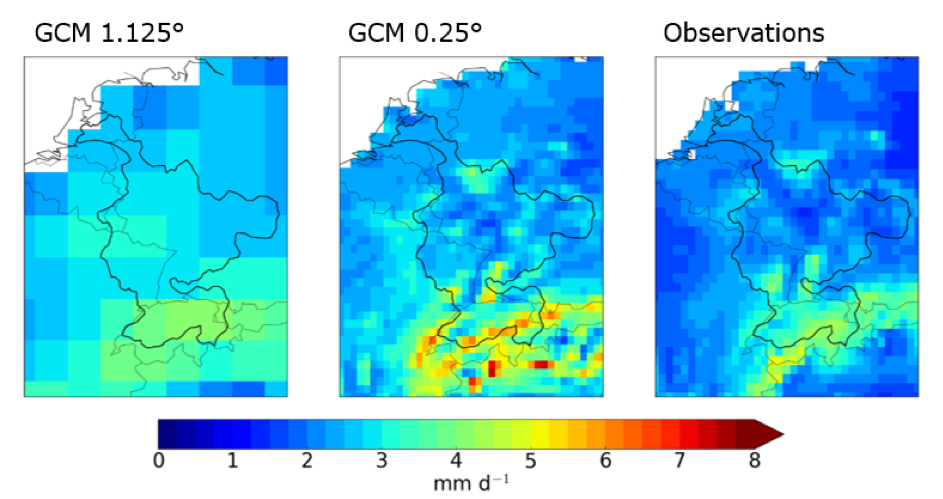Better hydrological cycle with high-resolution global models?

To study the global hydrological cycle and its response to a changing climate, we rely on global climate models (GCMs) and global hydrological models (GHMs). In a new paper in HESS, we have evaluated the benefits of increasing the resolution of a GCM and a GHM in simulating the hydrological cycle over the Rhine and Mississippi basins. Imme Benedict conducted this research as part of her PhD-project.

We found that increasing the resolution of a GCM (1.125° to 0.25°) results in an improved precipitation budget over the Rhine basin (see Figure), attributed to a more realistic large-scale circulation. These improvements with increased resolution are not found for the Mississippi basin, possibly because precipitation is strongly depending on the representation of still unresolved convective processes.
Increasing the resolution of the GCM improved the simulations of the monthly averaged discharge for the Rhine, but did not improve the representation of extreme streamflow events. For the Mississippi basin, no substantial differences in precipitation and discharge were found between the two resolutions input GCM and the two resolutions GHM. Increasing the resolution of parameters describing vegetation and orography in the high resolution GHM (from 0.5° to 0.05°) shows no significant differences in discharge for both basins.
A straightforward resolution increase in the GHM is thus most likely not the best method to improve discharge predictions, which emphasizes the need for better representation of processes and improved parameterizations that go hand in hand with resolution increase in a GHM.
Benedict, I., van Heerwaarden, C.C., Weerts, A.H., and Hazeleger, W., 2019. An evaluation of the importance of spatial resolution in global climate and hydrological models based on the Rhine and Mississippi basins, Hydrology and Earth System Sciences, https://doi.org/10.5194/hess-23-1779-2019.
